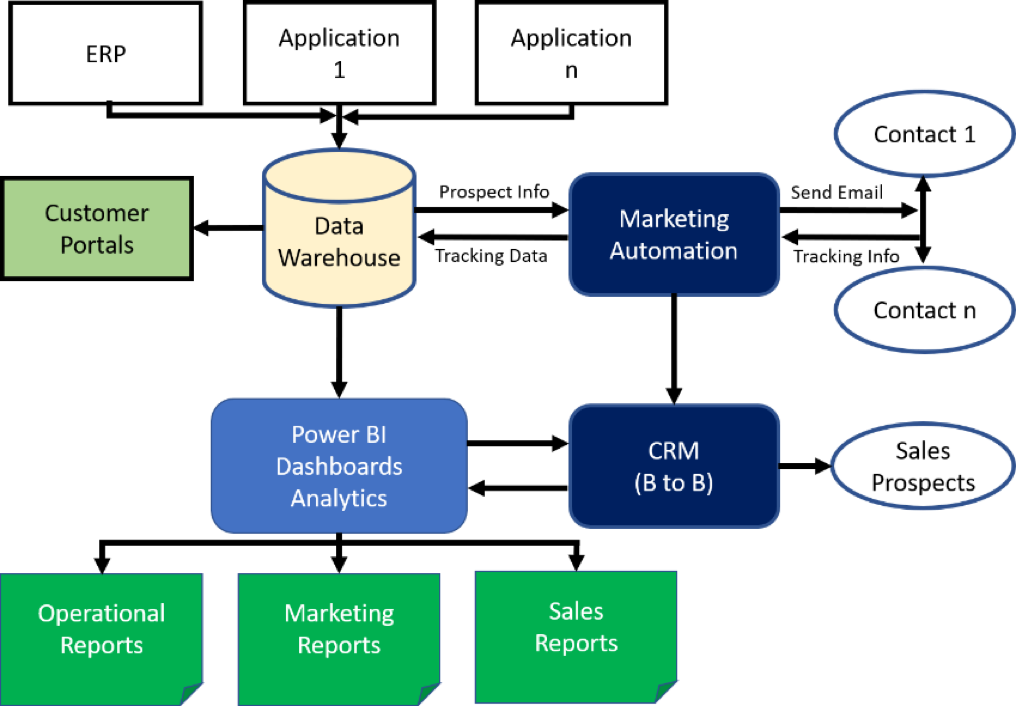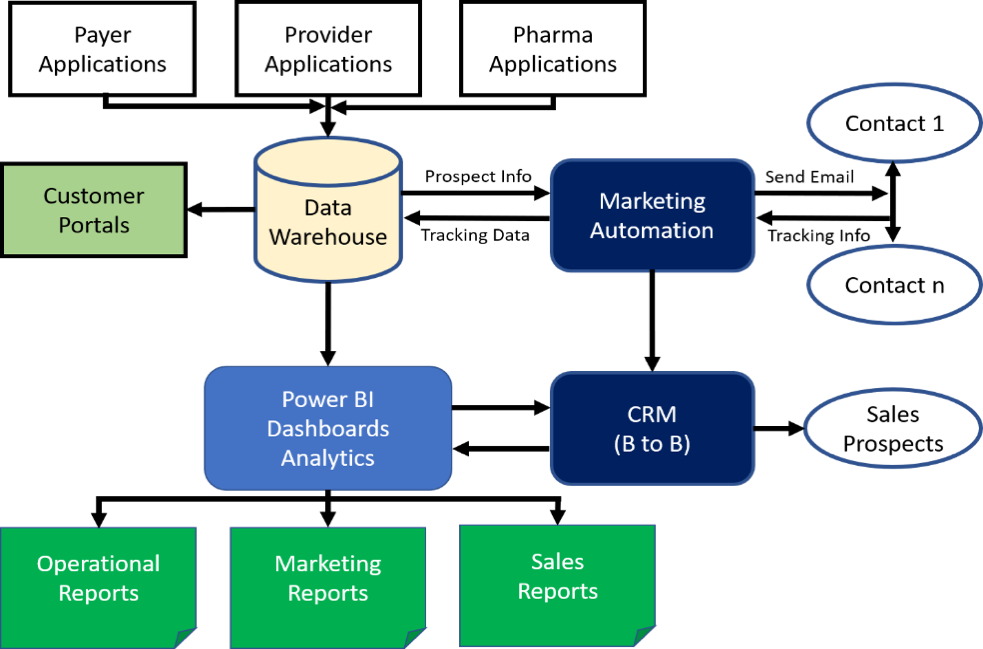Customer intelligence (CI) is the process of gathering and analyzing information regarding customers, and their details and activities, to build deeper and more effective customer relationships and improve decision-making by vendors. CI can apply to any industry. The approach may vary slightly by industry, but will be substantially like the healthcare use case described below.
CI begins with the basic key facts about the customer, such as their name, gender, geographic location, etc. This data is then augmented with performance data that may include transactions, activities like purchase history or other types of customer interactions. The data can be gathered from several sources like ERP, marketing statistics from email or ad campaigns or interactions, from service contacts over the phone and via e-mail, etc.
The first step, and often the biggest challenge, is to bring all the data together in a format that can be analyzed (see Figure 1 below). By mining this data, and placing it in context with wider information about competitors, conditions in the industry, and general trends, information can be obtained about customers’ existing and future needs, how they reach decisions, and predictions made about their future behavior.
Benefits
- Better insights into customer profile and behavior
- Improved productivity, effectiveness, and conversion rates
- Better campaign definition and targeting to improve marketing ROI
- Can create drip campaigns and set triggers based on activity
- Campaign data is automatically aggregated into the data warehouse
- Perform advanced analytics on the combined data
- Publish reports for internal use or make reports available through customer portals

Customer Intelligence Notional Architecture
